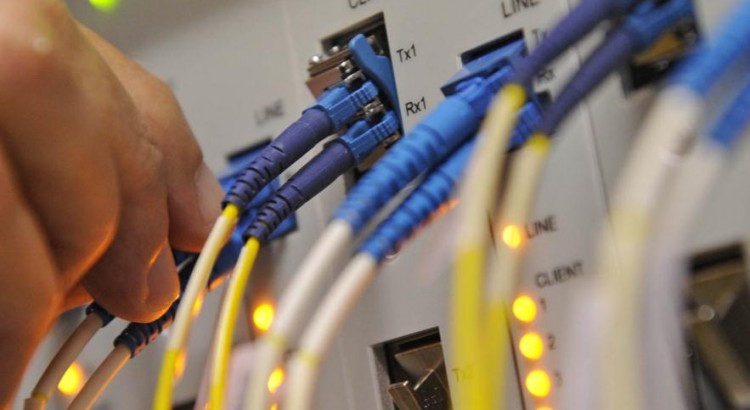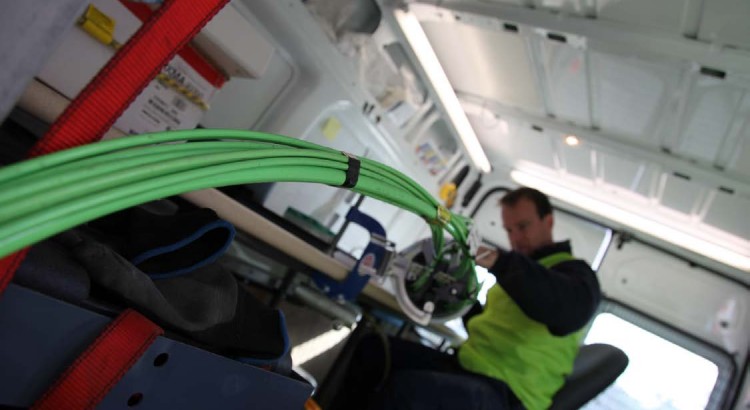Price signals to more high capacity plans and less network congestion
The NBN pricing discussion has hit full swing again. The company responsible for building the National Broadband Network, nbn, has just pushed ahead with its proposed “dimension-based” discount on its controversial “Connectivity Virtual Circuit” (CVC) charge.
CVC is a virtual charge imposed by nbn to service providers in order to bring traffic from the “NBN network” to the service provider network (and vice versa). This bandwidth is shared amongst all of the users on the same provider’s network aggregated at the 121 NBN points of interconnect. You can read more about the threat of the CVC charge on nbn’s success here.
The newly introduced dimension-based discount sees greater discounts for service providers who purchase more hand-off capacity between the “NBN network” and the service provider’s network on a per-user basis.
The discounts being implemented will range from $0.50 to up to $6.00 per Mbps of CVC, depending on the average amount of CVC purchased per user.
Band-aid to solving two problems
Congestion
This discount is a very significant signal to service providers.
CVC “skimping” is a known problem for many NBN customers, whose Internet connection can grind to a halt during peak hours due to insufficient CVC bandwidth. Especially with its widely unpopular Fibre to the Node network, NBN simply cannot afford to have negative perceptions about the performance of its network — whether it is provider-induced or indeed, NBN-induced.
This discount not only encourages ISPs to buy more CVC (reducing skimping and improving performance), it will also encourage ISPs to sell higher-speed or higher-capacity plans. More on that in a bit.
But first — why will it solve congestion? Simply because in many cases, it is cheaper for providers to purchase more bandwidth (thereby decreasing congestion) than to retain their old per-user allocations.
Take an example service provider who provisions on average anywhere between 583 to 600 Kbps of CVC bandwidth per user. It becomes cheaper for the provider to purchase more CVC than to use the existing bandwidth allocation:
|
CVC provisioned per user |
CVC rate per Mbps |
CVC rate per user |
|
583 Kbps |
$16.25 |
$9.47 |
|
600 Kbps |
$16.25 |
$9.75 |
|
601 Kbps |
$15.75 |
$9.47 |
|
619 Kbps |
$15.75 |
$9.75 |
Despite purchasing more CVC (601 to 619 Kbps), the CVC rate per user is either cheaper than or is equal to the old CVC rate thanks to the discounted rate.
Higher capacity / speed plans
This discount also encourages providers to sell more higher value plans.
A provider who exclusively sells low capacity plans will naturally have a lower amount of CVC-per-user provisioned. This means their CVC discount is less, costing them more on a per Mbps basis than a provider who sells a more diverse set of plans.
In contrast, a provider who sells more high-speed or high-capacity plans will have a greater CVC discount. This allows them to sell all of their plans marginally cheaper than the exclusive low capacity provider, even if they’re allocating the same CVC per user.
Thus, providers who diversify and increase the customer base to have more high usage users will benefit the most from these pricing discounts.
So what’s the target CVC-per-user?
Looking at the price modelling, it’s evident that nbn is targeting around the 1 Mbps and 1.25 Mbps per user mark. It offers the largest and most generous discounts at the 1150 Kbps mark, shaving a whole $1.42 per user by simply increasing the CVC-per-user by a mere 1 Kbps.
Reverse engineering NBN’s 2016 half-year results by combining ARPU and AVC speed tier breakdowns — we can estimate that the current CVC allocation per user across all providers is around 800 kbps.
Importantly, however, this excludes the initial 150 Mbps of CVC that NBN provides for free to service providers at each point of interconnect.
| AVC Tiers (Mbps) | Percentage (HY2016) | AVC+UNI Cost (ex GST) |
| 12/1 |
33% |
$24 |
| 25/5 |
45% |
$27 |
| 50/20 |
6% |
$34 |
| 100/40 |
16% |
$38 |
| Avg AVC/UNI Revenue per user |
$28.19 |
|
| Price component | Revenue per user per month |
| ARPU (HY2016) |
$43.00 |
| Avg AVC/UNI Revenue |
-$28.19 |
| Avg CVC/NNI Revenue |
$14.81 |
| Estimated Avg CVC^ |
~835 Kbps |
^ excluding initial 150Mbps credit per provider per CSA. Assumes an NNI cost per user to be ~20¢.
Of course, the way that NBN constructs its product means that providers will always want to purchase more CVC. Whether or not they can afford it is another problem.
Going forward, NBN must maintain an open dialog with service providers to ensure that the pricing is adaptable to the bandwidth demands of Australians. Whether it’s a complete rethink of the pricing structure or continual discounts — this pricing model is vital to the success of the network.

